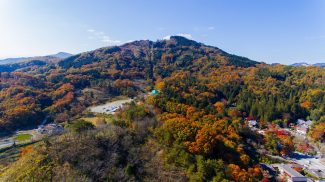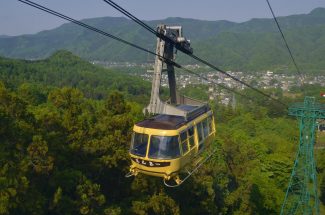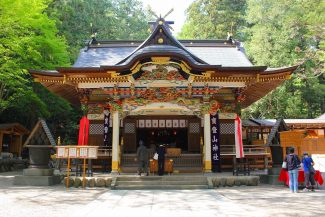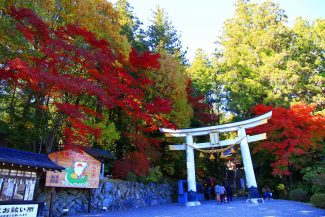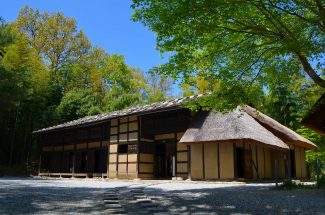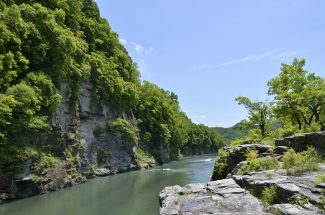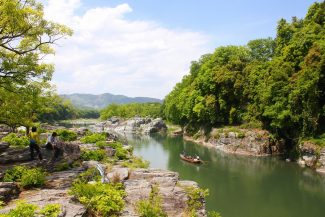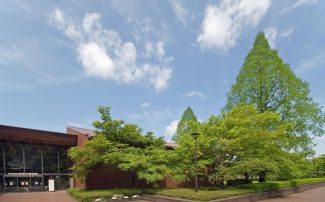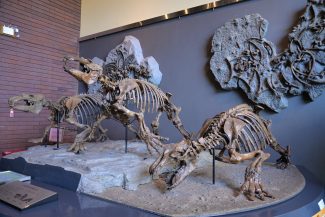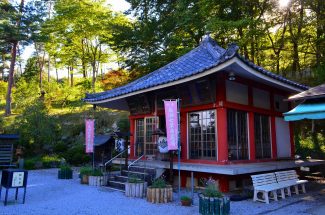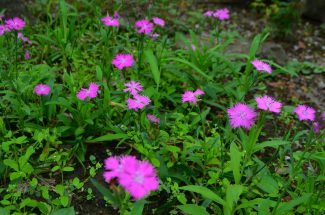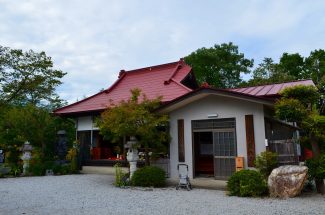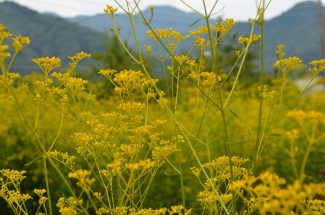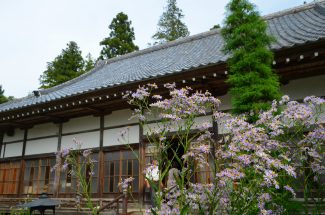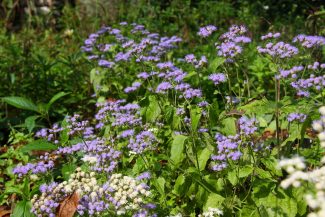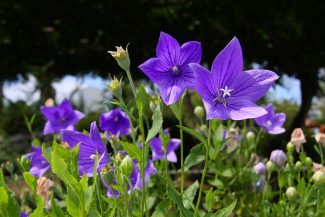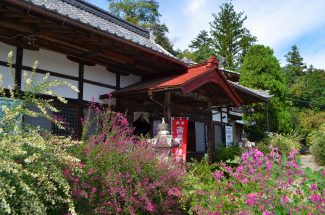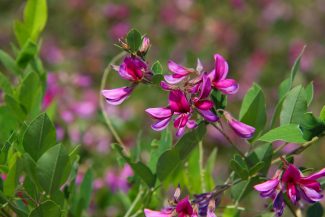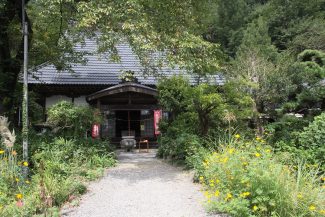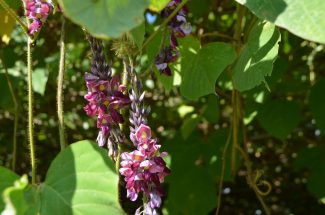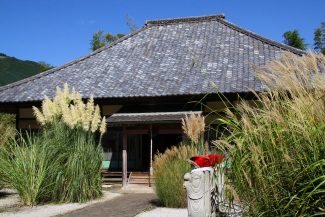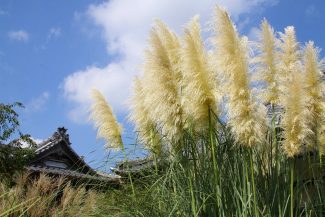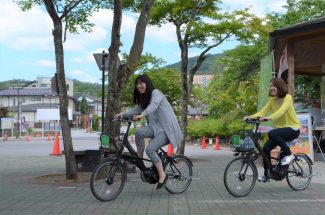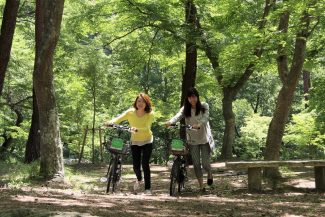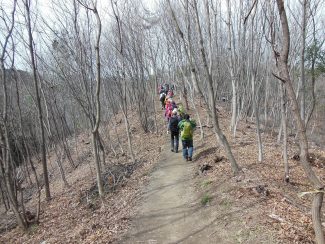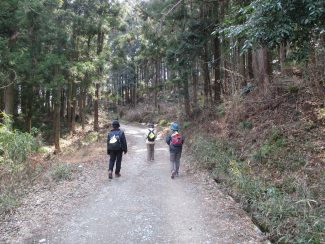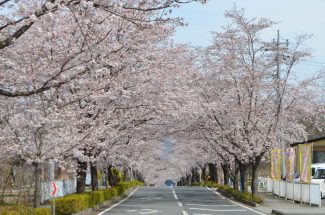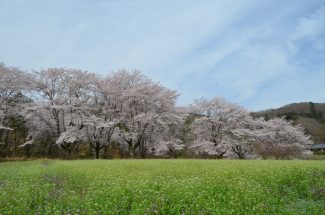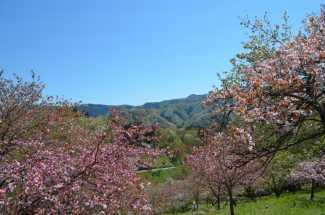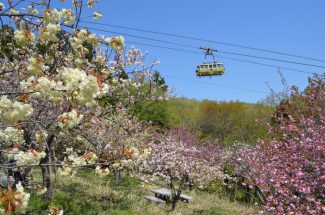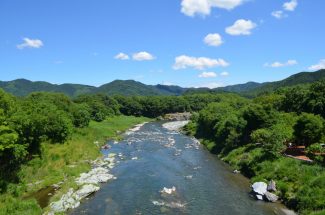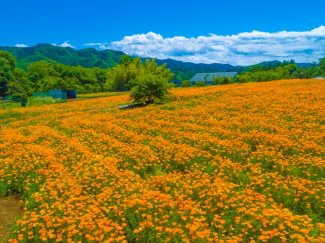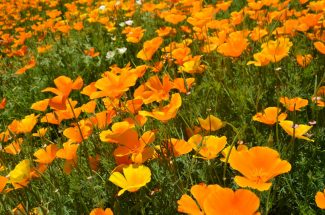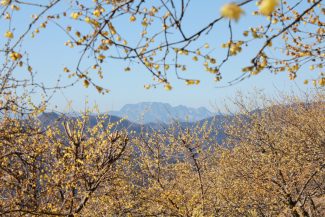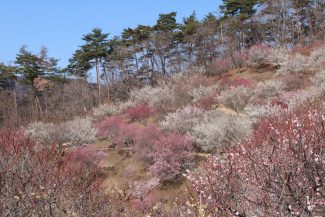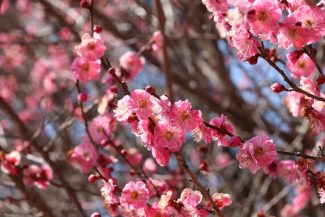Welcome to Nagatoro!
Nagatoro Tourist Information Center will guide you to the major sightseeing spots in Nagatoro.
In addition to that, we also provide information about the major water activities in Nagatoro.
Nagatoro Tourist Association hopes this information will be helpful to you on your trip.
We look forward to having a great time together in Nagatoro!
Nagatoro Major Tourist Spots
① Mt. Hodo
One of The Popular Mountain for Begining Hikers
Mt. Hodo is a representative mountain of Nagatoro, reaching a height of 497.1-m Hodosan Ropeway is available at Mt. Hodo and it only takes about five minutes from Sanroku Station (at the foot of a mountain) to Sancho Station (at the top of Mt. Hodo). At the summit of Mt. Hodo, you can enjoy the magnificent view of mountain range as well as seasonal scenery including azaleas in spring, new green foliage in summer, red and yellow foliage in autumn, wintersweet and plum blossoms in winter. Mt. Hodo is loved by people of all ages, from small children to the elderly.
② Hodosan Small Animal Zoo
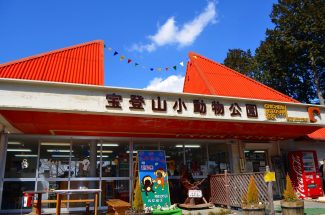
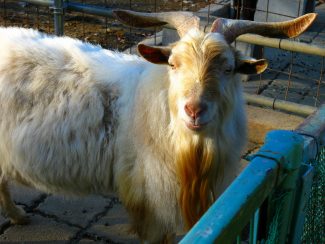
Meet the animals and enjoy the wonderful nature!
Hodosan Small Animal Zoo, located at the top of Mt. Hodo, was established in 1960 as a “monkey park”. It is very popular among children as a unique facility where they can interact with animals including Japanese macaques and Japanese Sika Deer in the midst of nature. We hope you spend a pleasant time while taking a deep breath of the great nature at Hodosan Small Animal Zoo!
Address:
2209-6 Nagatoro, Nagatoro-machi, Chichibu-gun, Saitama, Japan
Access:
Getting off at Nagatoro Station and take the Hodosan Ropeway (about 5-minutes ride).
7-minutes walk from Sancho Station (at the top of Mt. Hodo).
Business Hours:
10:00 a.m. ~ 4:30 p.m. (Note: Admission tickets are available until 30 minutes before the zoo closes.)
Holiday: Open all year round
Admission Fee:
Adults (junior high school students and older) – 500 yen /Children (3 years old and older) – 250 yen
Telephone: 0494-66-0959
③ Hodosan Shrine
One Star in the Michelin Green Guide Japan
The Origin: According to the legend of Hodosan Shrine, about 1900 years ago, during the throne of the 12th Emperor Keiko, Prince Yamato-takeru-no-Mikoto was ordered by the Emperor to conquer the eastern part of Japan. The Prince and his army were heading for the summit of the mountain to offer prayers to the Shinto deities (kami). On his way, he encountered a raging fire coming from the northeast, and there was no way for him to retreat. However, suddenly the giant dogs jumped into the fire and tried to extinguish it. After the fire was put out, the dogs guided the Prince and his army to the mountaintop. He was impressed with this amazing experience and they were all able to safely climb to the top of the mountain and worship there. This is said to have given rise to the name “Hodoyama” (fire-stop-mountain). He also learned that the giant dog was the sacred dog of the deity Oyamazumi, and he worshipped the fire deity for fire protection.
Enshrined Gods:
- Kamu-yamato-iware-biko-no-Mikoto
(Emperor Jimmu, who founded Japan) - Ooyamazumi-no-Kami
(Mountain deity, which provides everlasting harvest) - Ho-musu-bi-no-Kami
(Fire deity, which provides everlasting fire)
The proper manner of praying at the shrine:
- Purify your hands and mouth at the purification font before approaching the deities
- Deeply bow twice
- Clap hands twice and pray
- Deeply bow once
It is important to follow this manner, but it is more important to have a sincere attitude!✨
Address:
1828 Nagatoro, Nagatoro-machi, Chichibu-gun, Saitama, Japan
Access:
15-minutes walk from Nagatoro Station (on Chichibu Railway).
Telephone: 0494-66-0042・0494-66-0084
Opening Hour:
April through September 8:30 a.m. ~ 5:00 p.m.
October through March 8:30 a.m. ~ 4:30 p.m.
Website:
http://www.hodosan-jinja.or.jp/english/
④ Historic Arai Silkworm House/Nagatoro Town Museum
Designated as National Important Cultural Property
Nagatoro Town Local History Museum is a relocated reconstruction of the Arai family residence, a feudal lord in the Edo period. The building is said to be approximately 250 years old, and its structure is said to be a good representation of the sericultural farmhouses that were once common in Nagatoro. You can explore and study about traditional culture and buildings in Nagatoro as if you were traveling back in time.
Address:
1164 Nagatoro, Nagatoro-machi, Chichibu-gun, Saitama, Japan
Access:
10 minutes walk from Nagatoro Station (on Chichibu Railway).
Telephone:
0494-66-0297
Opening Hours:
9:00 a.m.~ 5:00 p.m.
October through March: 9:00 a.m. ~ 4:00 p.m.
Closed:
October 1 to March 31
Mondays (or the following day if Monday is a national holiday)
December 29th ~ January 3rd and there might be other occasional closures.
Admission Fee:
Adults – 200 yen/Junior high school students and under – 100 yen
Website:
http://www.town.nagatoro.saitama.jp/shisetsu/siryokan/ (available only in Japanese)
⑤ Nagatoro Iwadatami
Nagatoro Valley is about 6-km long in total and is designated a place of scenic beauty and natural monument. The valley contains Iwadatami, a rock formation exposed over a width of 80-m and a length of 500-m along the Arakawa river. It was named Iwadatami because the rocks look like Japanese tatami mats piled on top of each other. Throughout the Nagatoro Valley, you can enjoy looking at the formative beauty of nature that was created by changes in the earth’s crust and erosion by the river.
Address:
1164 Nagatoro, Nagatoro-machi, Chichibu-gun, Saitama, Japan
Access:
5 minutes walk from Nagatoro Station (on Chichibu Railway).
Telephone:
0494-66-0297
Opening Hours: Open all year round
Admission Fee: Free
⑥ Saitama Museum of Natural History
Saitama Museum of Natural History is the museum that exhibits and explains the 300 million years of history of nature in Saitama intelligibly, using precious fossils, a large diorama, and taxidermized creatures that you can touch. The fossils of an extinct giant shark and a rare Paleoparadoxia are must-see exhibits. Nagatoro is known as the birthplace of geology in Japan and has been visited by many researchers and students since the end of the 19th century. The museum collects and houses natural history artifacts from around the Nagatoro area. This museum is a great place to start when visiting the Nagatoro/Minano area.
Address:
1417-1 Nagatoro, Nagatoro-machi, Chichibu-gun, Saitama, 369-1305
Access:
A 5-minute walk from the Kami-nagatoro Station (on the Chichibu Railway).
A 15-minute walk from the Nagatoro Station (on the Chichibu Railway).
The Seven Flower Temple
The Seven Flower Temples are 7 temples in Nagatoro that each has one of the seven flowers of autumn. The seven flowers are including bush clover, Japanese pampas grass, kudzu, fringed pink, golden lace, thoroughwort, and Chinese bellflower. The Japanese people have loved these flowers since long ago. We recommend taking a tour of the Seven Flower Temples by hiking or using a rental bicycle.
⑦ Fudoji Temple (不動寺) - The Temple of Fringed Pink
Address: 1753-1 Nagatoro, Nagatoro-machi, Chichibu-gun, Saitama
Access: 20 minutes walk from Nagatoro Station (on Chichibu Railway).
Telephone: 0494-66-0262
Best time to see: Late August to mid-September
⑧ Shinshoji Temple (真性寺) - The Temple of Golden Lace
Address: 2323 Honnogami, Nagatoro-machi, Chichibu-gun, Saitama
Access: 10 minutes walk from Nogami Station (on Chichibu Railway).
Telephone: 0494-66-0584
Best time to see: Mid-August to late September
⑨ Hozenji Temple (法善寺) - The Temple of Boneset
Address: 476 Ido, Nagatoro-machi, Chichibu-gun, Saitama
Access: 10 minutes walk from Nogami Station (on Chichibu Railway).
Telephone: 0494-66-0262
Best time to see: Early September to late September
⑩ Tahoji Temple (多宝寺) - The Temple of Balloon Flower
Address: 40-1 Honnogami, Nagatoro-machi, Chichibu-gun, Saitama
Access: 10 minutes walk from Nogami Station (on Chichibu Railway).
Telephone: 0494-66-2268
Best time to see: Late August to mid-September
⑪ Toshoin Temple (洞昌院) - The Temple of Japanese Bush Clover
Address: 2868 Nogami Shimogo, Nagatoro-machi, Chichibu-gun, Saitama
Access: 20 minutes walk from Nogami Station (on Chichibu Railway).
Telephone: 0494-66-2503
Best time to see: Mid-August to mid-September
⑫ Henjoji Temple (遍照寺) - The Temple of Arrowroot (葛)
Address: 2323 Nogami Shimogo, Nagatoro-machi, Chichibu-gun, Saitama, Japan
Access: 40 minutes walk from Nogami Station (on Chichibu Railway).
Telephone: 0494-66-1052
Best time to see: Early August to mid-September
⑬ Dokoji Temple (道光寺) - The Temple of Japanese Pampas Grass
Address: 735 Iwata, Nagatoro-machi, Chichibu-gun, Saitama, Japan
Access: 10 minutes walk from Higuchi Station (on Chichibu Railway).
Telephone: 0494-66-0262
Best time to see: Mid-August to Late September
Popular Activites in Nagatoro
◎ River Boating
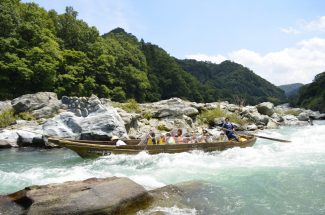
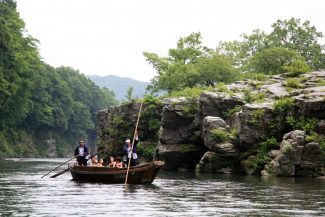
River boating has been enjoyed in Nagatoro since the beginning of the 20th century, and is one of Nagatoro’s major attractions, bringing in 200,000 visitors a year. Ride a boat handled by a skilled boatman and view the gorgeous valley that is a natural monument while cruising down powerful rapids and gentle currents. Highly recommended to do river boating during the summer time when the river is full of water!
Boarding Process:
1. Please purchase a ticket first and you will be guided to the boarding area.
2. Depending on the course that you take, they will escort you to the different boarding spots.
▶If you take upstream (near Oyahana Bridge) to Iwadatami, they will bring you to the departure point by that shuttle bus. It will end at Iwadatami area and it will only take 5 minutes walk from Nagatoro Station.
▶If you take the course from Iwadatami to downstream (around Takasago Bridge), they will be dropped back at Nagatoro Station by bus.
There are three river boating companies in Nagatoro:
❖ Nagatoro Line Kudari (長瀞ライン下り)
Address: 489-2 Nagatoro, Nagatoro-machi, Chichibu-gun, Saitama 369-1305
Telephone: 0494-66-0950
❖ Arakawa Line Kudari (荒川ラインくだり)
Address: 531-1 Nagatoro, Nagatoro-machi, Chichibu-gun, Saitama 369-1305
Telephone: 0494-66-0890
❖ Nagatoro Funakudari (長瀞舟下り)
Address: 813-4 Nagatoro, Nagatoro-machi, Chichibu-gun, Saitama 369-1305
Telephone: 0494-69-2151
◎ Rafting/Canoeing/Kayaking
Rafting, canoeing, and kayaking are all popular outdoor water activities especially from the younger generation. During the summer time in Nagatoro, you can definitely experience the dynamic Nagatoro rapids in an inflatable raft. With an experienced guide at your side, it is safe to try out even for beginners.
If you would like to try out one of these water activities in Nagatoro, please click here for more information.
Note: The website for outdoor activity indicated above are available in Japanese only. If you need more information in English, please contact Nagatoro Tourist Information Center (business hour: 9:00 a.m. ~ 5:00 p.m.) .
◎ Rent-A-Cycle (Rental Bicycle)
Renting a bicycle is the one of the great way to see all the tourist attractions in Nagatoro. You can tour all the sights in Nagatoro in about half a day of cycling. There are both, normal bicycles and electric-assist function bicycles are available for the rental. Electric bicycles are highly recommended as they are easy to ride up hills. Rentals are available from 9:00 a.m. to 5:00 p.m. at the Nagatoro Tourist Information Center in front to Nagatoro Station.
◎ Hiking
One of the major activities you can do in Nagatoro is hiking. Especially, Mt. Hodo is a very popular mountain for beginners. There are two main trails in Nagatoro: Hodosan Hiking Course and Nagatoro Alps Course. Every year, a lot of hikers decide to climb Mt. Hodo to appreciate the view of mountain range, beautiful seasonal flower, and clean fresh air. Highly recommended to go for hiking is during winter season (around the end of December through mid-March).
Two Major Hiking Course in Nagatoro:
Hodosan Hiking Course – Nagatoro Station to the summit of Mt. Hodo (Required time: approxmately an hour and 20 minutes)
Nagatoro Alps Course – Manpukuji Temple to the summit of Mt. Hodo (Required time: approxmately 2 hours and 10 minutes)
Seasonal Flowers Recommendation
Spring:
Nagatoro has been selected as one of the 100 most famous spots for cherry blossoms in Japan. North Cherry Blossom Street (北桜通り;Kita-zakura Dori) is the most popular spot as about 400 cherry blossoms line the 2.5 km stretch along the Arakawa River from Nagatoro Station to Takasago Bridge, making it look like a tunnel of pink flowers. In addition to that, the Sakura Passage (通り抜けの桜;Torinuke-no-sakura) is the another location where you can enjoy over 30 varieties of double-flowered cherry blossoms. During the flowering season, they are lit up with beautiful illuminations to create a spectacular sight. The best time to see the flowers is from the end of March to mid-April on Kita-zakura Street and from mid-April to late April on the Sakura Passage. which features a tunnel of flowers made by the cherry blossom trees on both sides of the road.
Kita-zakura Street (北桜通り)
Address: Nagatoro, Nagatoro-machi, Chichibu-gun, Saitama, Japan
Access: 5 minutes walk from Nagatoro Station (on Chichibu Railway).
Sakura Passage (通り抜けの桜)
Address: 1753-1 Nagatoro, Nagatoro-machi, Chichibu-gun, Saitama, Japan
Access: 20 minutes walk from Nagatoro Station (on Chichibu Railway).
Summer:
Nagatoro is said to be at its most beautiful in May and June, when the fresh greenery gradually darkens in early summer. The Arakawa River coastline is covered with fresh green leaves and vivid young foliage. During the rainy season, the trees also become hydrated and even greener, and the season of “Aomomiji” (green maple leaves) will come. From the mid-May through mid-June, the young leaves of the green maple trees are lit up with dazzling illuminations at Tsukinoishi Momiji Koen (Moon Stone Maple Park).
Moon Stone Maple Park (月の石もみじ公園)
Address:1164 Nagatoro, Nagatoro-machi, Chichibu-gun, Saitama, Japan
Access: 5 minutes walk from Kami-Nagatoro Station/15 minutes walk from Nagatoro Station (on Chichibu Railway).
California Poppy Garden (ハナビシソウ園;Hanabishisou-en) is located at the back of the Nagatoro Town Museum. In early summer, California poppies, also known as golden poppies, bloom all over the hill. From mid-May through mid-June is the best time to enjoy the create the gorgeous contrast between the deep blue of the sky and the vivid orange color of the poppy.
California Poppy Garden (ハナビシソウ園)
Address:1164 Nagatoro, Nagatoro-machi, Chichibu-gun, Saitama, Japan
Access: 8 minutes walk from Nagatoro Station (on Chichibu Railway).
Telephone: 0494-66-3111 (Industrial Tourism Division at Nagatoro Town Office)
Autumn:
❖ Seven Autumnal Flowers (秋の七草)
The Seven Flower Temples are 7 temples in Nagatoro that each has one of the seven flowers of autumn. The 7 flowers are bush clover, Japanese pampas grass, kudzu, fringed pink, golden lace, thoroughwort, and Chinese bellflower. The Japanese people have loved these flowers since long ago. We recommend taking a tour of the Seven Flower Temples by hiking or using a rental bicycle. Please scroll up for more information about the Seven Flower Temples.
❖ Fall Foliage (紅葉)
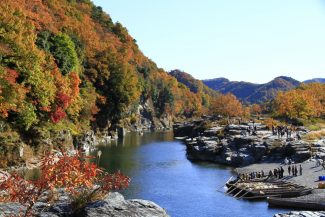
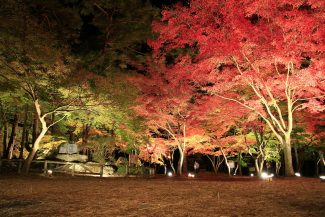
Nagatoro is known for the great viewing spots for autumn leaves. Tsukinoishi Momiji Koen (Moon Stone Maple Park) is one of the popular location to see the beautiful autumn foliage in Nagatoro, which will be illuminated around mid-November. It is very pleasure to stay since it offers mystical and alluring atmosphere. Autumn leaves alongside Arakawa River (especially around Iwadatami area) is also wonderful to take a look when evening sunlight hits the leaves and rocks beautifully.
Moon Stone Maple Park (月の石もみじ公園)
Address:1164 Nagatoro, Nagatoro-machi, Chichibu-gun, Saitama, Japan
Access: 5 minutes walk from Kami-Nagatoro Station/15 minutes walk from Nagatoro Station (on Chichibu Railway).
Winter:
Wintersweet Garden and Plum Garden spread across the summit of Mt. Hodo in Nagatoro. There are 2500 wintersweet trees dispersed over a 10,000 square meter slope. When wintersweet trees reach in full bloom in February, you can enjoy their sweet fragrance and elegant yellow flowers. Furthermore, the Plum Garden boasts about 470 trees of about 170 varieties of plum blossoms in red, white, peach, and other colors. The garden is especially beloved during the winter season, when it attracts many hikers and tourists.
For inquiry about the sightseeing in Nagatoro:
Nagatoro Tourist Information Center (Nagatoro Tourist Association)
Telephone: 0494-66-0307 /0494-66-3311
Business Hour: 9:00 a.m. ~ 5 p.m.
Closed: December 29th, 30th, and 31st every year
▽ Things that are available at the information center:
- Tourist information
- Bicycle rentals
- Baggage check
- Wheelchair loans
- Foreign-language services
- Tourist stamps
- Breastfeeding rooms


